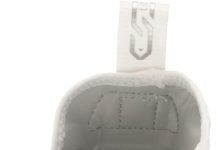Hey, fellow sports enthusiasts! We all know the feeling of finding that perfect pair of cleats that feel like they were custom-made for our feet. They give us the confidence to conquer the field with every step. But as time goes on, the wear and tear start to take a toll, leaving us wondering, “How can I make my cleats last longer?” Well, fret not, because we’ve got some fantastic tips and tricks up our sleeves that will help you extend the lifespan of your beloved cleats. No more prematurely saying goodbye to your favorite footwear – let’s dive in and discover the secrets to keeping your cleats in top-notch condition!
Choosing the Right Cleats
Review contents
Consider the Playing Surface
When it comes to choosing the right cleats, one of the most important factors to consider is the playing surface. Different sports and different playing surfaces require different types of cleats for optimal performance and safety. For example, football cleats have longer, detachable studs for better traction on grass, while soccer cleats have shorter, firm-ground studs for better maneuverability on artificial turf. By considering the playing surface, you can ensure that you choose the right cleats for your specific sport and playing conditions.
Select the Right Material
Another crucial aspect to consider when choosing cleats is the material they are made of. Cleats are typically made from leather, synthetic materials, or a combination of both. Leather cleats offer a superior fit and comfort and tend to mold to the shape of your foot over time. Synthetic cleats, on the other hand, are often more affordable and provide excellent durability and water resistance. It’s important to strike a balance between comfort, durability, and performance when selecting the right material for your cleats.
Check for Quality Construction
In addition to considering the playing surface and selecting the right material, it’s essential to check for quality construction when choosing cleats. Look for features such as reinforced stitching, sturdy soles, and secure lacing systems. These elements contribute to the overall durability and longevity of your cleats. Avoid cleats with loose threads, flimsy soles, or weak laces, as these can lead to premature wear and tear. Investing in well-constructed cleats ensures that they will withstand the rigors of gameplay and last longer.
Proper Cleaning and Maintenance
Clean After Each Use
To maximize the lifespan of your cleats, it’s crucial to clean them after each use. This simple but often overlooked step helps remove any dirt, grass, or mud that may have accumulated during gameplay. Cleaning your cleats not only keeps them looking good but also prevents the buildup of bacterial and fungal growth. Use a soft-bristled brush or a damp cloth to remove any debris, taking extra care to clean the hard-to-reach areas between the studs.
Remove Mud and Debris
One of the common enemies of cleats is mud and debris that get stuck in between the studs. Leaving mud to dry and harden can lead to damage and make it difficult to remove later. To prevent this, use a soft brush or an old toothbrush to carefully remove any excess mud and debris from the cleats. Taking the time to clean the crevices between the studs will help maintain the overall performance and longevity of your cleats.
Dry Thoroughly
After cleaning your cleats, it’s crucial to ensure that they are thoroughly dried before storing them. Moisture trapped inside the cleats can lead to mold or mildew growth, causing an unpleasant odor and deterioration of the materials. Avoid using direct heat sources such as hairdryers, as excessive heat can damage the integrity of the cleats. Instead, remove any excess moisture with a dry cloth or towel and allow the cleats to air dry naturally in a well-ventilated area.
Protective Measures During Play
Avoid Excessive Use
While it’s tempting to wear your favorite cleats for every practice session or game, excessive use can significantly shorten their lifespan. Cleats are subjected to a significant amount of stress and impact during gameplay, which can lead to accelerated wear and tear. To make your cleats last longer, it’s important to rotate them and avoid using a single pair for every activity. This allows the materials to rest and recover, extending the overall durability of your cleats.
Rotate Between Multiple Pairs
A practical approach to extending the lifespan of your cleats is to rotate between multiple pairs. By having two or more pairs of cleats, you can alternate their use and give each pair ample time to dry and recover between sessions. This rotation not only prevents excessive wear but also allows you to adjust to different playing conditions more effectively. Having a backup pair of cleats is particularly beneficial for athletes who frequently play on different surfaces or encounter unexpected weather conditions.
Apply a Waterproof Spray
To provide an extra layer of protection for your cleats, consider applying a waterproof spray. Waterproof sprays create a resistant barrier against water absorption, helping to keep your cleats dry and prolong their lifespan. This is especially crucial if you regularly play on wet or muddy surfaces. Follow the manufacturer’s instructions when applying the spray, and reapply it periodically, as the effectiveness may wear off over time. By taking this simple step, you can minimize the risk of water damage to your cleats.
Preventing Wear and Tear
Store Properly
Proper storage is key to preventing unnecessary wear and tear on your cleats. When you’re not using them, make sure to store them in a cool, dry place away from direct sunlight. Avoid storing them in damp or humid areas, as moisture can lead to mold or mildew growth. It’s also essential to avoid stacking heavy objects on top of your cleats, as this can distort their shape or damage the materials. Invest in a shoe bag or a dedicated cleat storage compartment to keep them protected and in good condition.
Avoid Walking on Hard Surfaces
Cleats are designed for specific playing surfaces, and walking on hard surfaces such as concrete or pavement can cause unnecessary damage. The studs on your cleats are intended to provide traction on softer surfaces like grass or turf. Walking on hard surfaces can wear down the studs faster and affect their grip during gameplay. Whenever possible, avoid walking long distances or on hard surfaces while wearing your cleats. Instead, wear comfortable athletic shoes and change into your cleats just before stepping onto the field.
Use Cleat Covers
An effective way to protect your cleats from excessive wear when off the field is by using cleat covers. Cleat covers are protective accessories made from durable materials that fit snugly over your cleats, providing an additional layer of protection. These covers help prevent the studs from wearing down, keep dirt and debris out, and reduce the risk of accidental damage during transportation or storage. Investing in a pair of cleat covers is a small but worthwhile investment to extend the lifespan of your cleats.
Repair and Replacement
Fix Minor Damage
Even with proper care, cleats may encounter minor damage such as loose stitching or a detached sole. In such cases, it’s important to address these issues promptly to prevent further damage. Use a strong adhesive specifically designed for footwear to reattach loose parts or secure loose stitching. However, if the damage is extensive or affects the overall performance and safety of the cleats, it may be necessary to replace them.
Replace Worn-Out Cleats
No matter how well you care for your cleats, there comes a point when they will be too worn out to provide adequate performance and protection. Signs of worn-out cleats include flattened or worn-down studs, significant sole separation, or visible cracks in the materials. When you start noticing these signs, it’s time to invest in a new pair of cleats. Continuing to use worn-out cleats can not only compromise your performance but also increase the risk of injuries. Regularly assess the condition of your cleats and replace them promptly when necessary.
By following these tips and incorporating them into your cleat care routine, you can significantly extend their lifespan and get the most out of your investment. With proper maintenance, your cleats will continue to provide optimal performance, comfort, and protection, allowing you to focus on what you do best on the field. So remember, choose the right cleats for your playing surface, clean and maintain them properly, take protective measures during play, prevent wear and tear, and promptly repair or replace when needed. Enjoy your time on the field and make your cleats last longer!





































